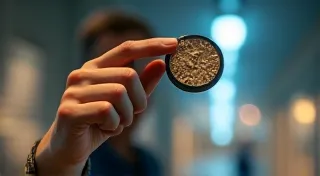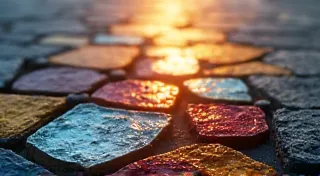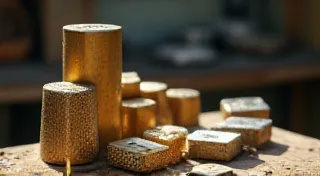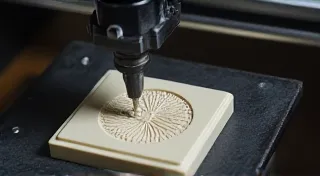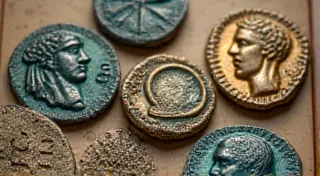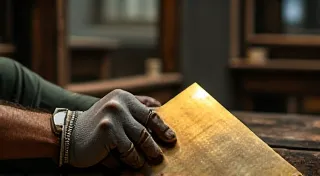Finishing Roman Coin Replicas: Patina and Wear
Achieve that aged, authentic look. This guide covers techniques for creating realistic patina and wear on your Roman coin replicas.
Creating Roman coin replicas isn't just about the casting process. Bringing them to life requires careful finishing, particularly when it comes to replicating the patina and wear that centuries of circulation would inflict on genuine ancient coins. A freshly cast replica, however accurately detailed, will look… new. This guide will explore several techniques to add that vital layer of authenticity.
Understanding Patina: What are we trying to replicate?
Patina isn't simply dirt. It’s the complex result of chemical reactions between the metal of the coin, the environment it existed in (soil acidity, air quality, water composition), and human interaction (handling, cleaning). Roman coins, primarily made of bronze and silver, underwent different patination processes. Bronze coins developed a complex mix of oxides (greens, browns, blacks), while silver coins often developed a darker, sometimes almost black, layer. The appearance also varied based on the region and the specific metal alloys used.
Techniques for Creating Patina
There are several methods to simulate patina, ranging from simple and relatively fast to more complex and time-consuming. Here are a few popular approaches:
1. Chemical Patination (Oxidation)
This is arguably the most common and effective method. It involves using chemical solutions to artificially oxidize the metal surface. Different solutions yield different colors. Here are a few commonly used options:
- Liver of Sulfur (Sodium Polysulfide): This is a classic choice for bronze replicas, producing a dark greenish-black patina. Apply carefully, as it can be very potent. Rinsing is crucial.
- Egg Yolks (Ferrous Sulfate): A less aggressive option, egg yolks contain ferrous sulfate, which creates a brown patina. The concentration of the solution (how many yolks per amount of water) affects the intensity.
- Copper Sulfate: Copper sulfate creates a blue-green patina, often seen on copper coins.
- Oxalic Acid (Handle with extreme care!): Can remove existing patina and darken the remaining surface, use with ventilation.
Safety Note: Always wear gloves, eye protection, and work in a well-ventilated area when using chemicals. Thoroughly research each chemical’s safety data sheet (SDS) before use.
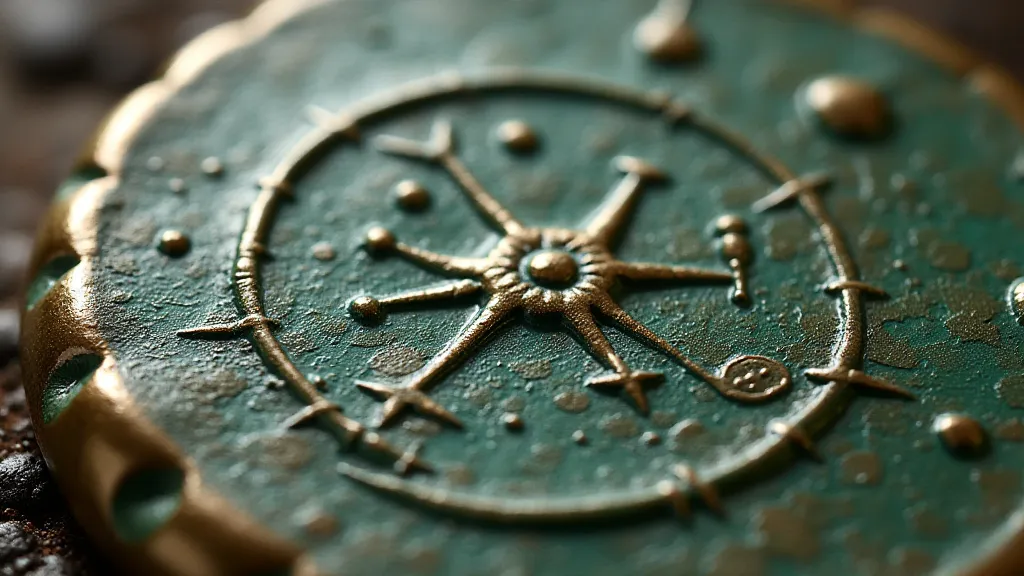
2. Physical Abrasion and Wear
Genuine coins weren't perfectly smooth. They suffered from scratches, raised areas, and worn details. After applying a patina, use fine sandpaper (extremely fine grit, 600 grit and higher), steel wool, or even a soft wire brush to selectively remove patina from high points and create a worn appearance. Focus on areas that would have experienced the most handling and rubbing – edges, raised portraits, and lettering.
Don't try to create uniform wear. Randomness is key! A slight imperfection here, a small scratch there, all contribute to the illusion of age.
3. Heat Treatment (Controlled Oxidation)
In some cases, carefully controlled heat can be used to accelerate oxidation. This technique requires practice and a good understanding of the metal’s behavior. It is best used in conjunction with other patination methods to achieve specific color variations. This process can involve torching the surface of the coin for few seconds, resulting in localized areas with varied oxidation
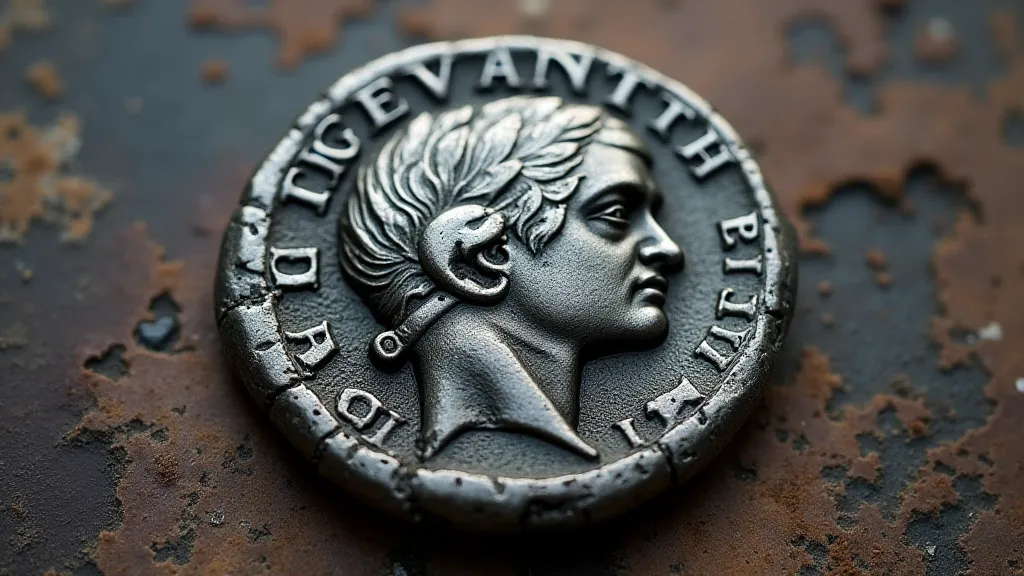
Tips for Realism
- Layering: Apply patina in thin layers, allowing each layer to dry or be rinsed before applying the next. This allows for more control and avoids an overly uniform look.
- Selective Application: Don't apply patina uniformly. Protect areas you want to remain brighter or use masking techniques to create patterns.
- Observation: Study genuine Roman coins! Examine photographs and, if possible, handle (with proper care) genuine specimens to understand the nuances of patina and wear.
- Experimentation: Patination is an art as much as it is a science. Experiment with different techniques and solutions to discover what works best for you and the desired effect.
- Clean up: After all patina layers are applied, rinse gently with distilled water. Dry with soft cloth
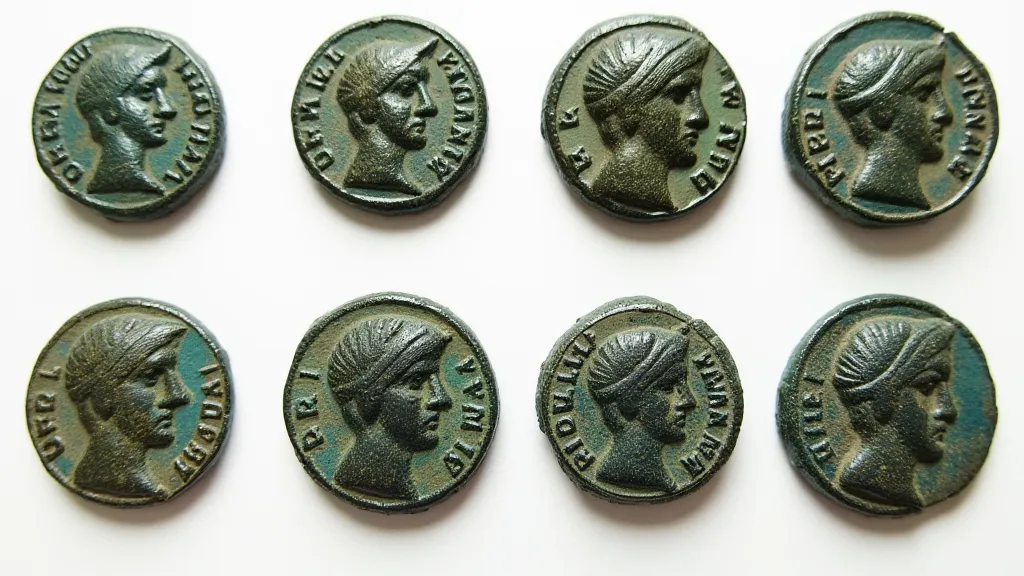
Conclusion
Achieving a convincing patina and wear on Roman coin replicas is an essential step in creating truly authentic pieces. By understanding the processes involved and experimenting with different techniques, you can transform a freshly cast replica into a convincing artifact of the Roman world.
